Crystal-clear crown forms for teeth restoration made by AnGer G&A are necessary whereever aesthetics plays the main role. Application of our crown forms guarantees smooth surface of the filling, and that reduces the risk of tartar and plaque.
When tooth is prepared for restoration, carefully choose the crown size. Choosing the right size assures natural look of reconstructed tooth.
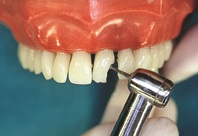
Adjust length of the crown by trimming the cervical end. It should overlap the tooth at least 2mm above the defect. This provides smooth joining of tooth and filling.
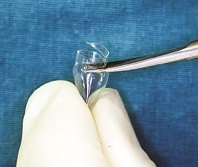
To eliminate formation of air bubbles in the filling, perforate the corners oor cusps of the crown before putting the filling in.
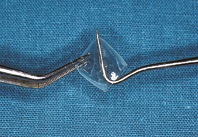
Place filling in the crown, so that is gathers at the very spot where the defect is the largest.

Once the crown is put on a tooth, remove excess of filling that came out of the crown through perforation. Secure the crown form with wedges and start polymerisation.

When the polymerisation process is completed, cut the crown form delicately - just make a simple scratch on the crown surface. Now remove the crown form from the reconstructed tooth.
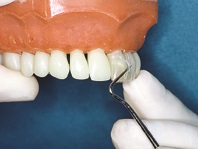
AnGer crown forms are a perfect solution when applying the layer reconstrucion method.
The labial surface of AnGer crown can be easily cut out to enable material application layer by layer in various shades which gives perfectly natural look of reconstructed tooth.
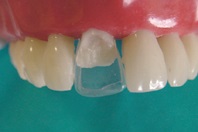
With secured lingual surface, proximal surfaces and incisal ridge of a tooth, the filling material applied by layers does not "drip". Before applying the last, facing layer, remove the crown form to avoid the layering effect.
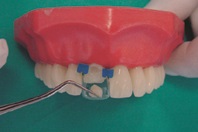
What makes AnGer crown forms so special?
Flexibility, strength, and well-designed cervical part that in an unusal way make it possible to use the crown forms in the layer method.










